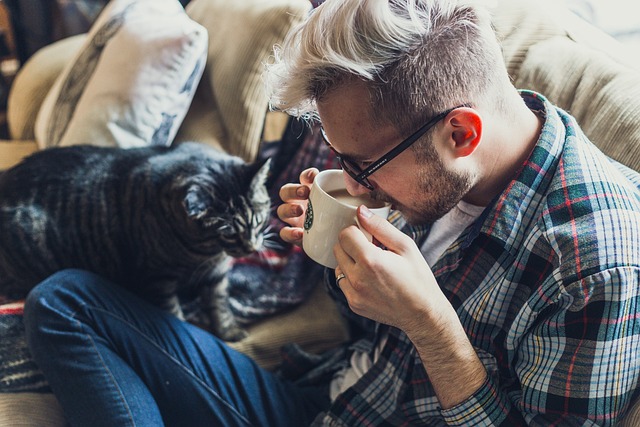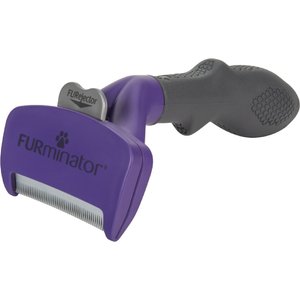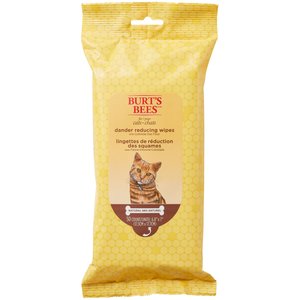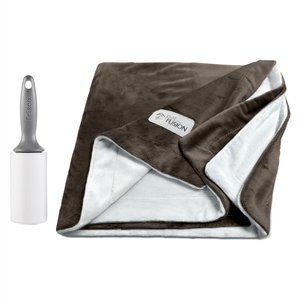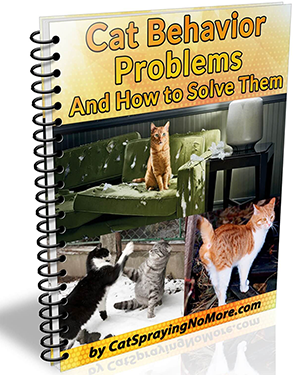Monthly Archives: May 2023
Expert Insights: Preventing Cats from Peeing All Over the House
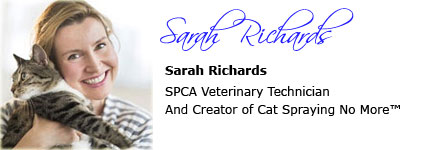 Dealing with a cat that repeatedly urinates outside its litter box can be a frustrating experience for any pet owner. To shed light on this common issue and provide valuable insights, we had the privilege of interviewing Sarah Richards, a renowned veterinarian and feline behavior expert. In this enlightening conversation, Dr. Bennett shares her expertise and offers practical advice on how to prevent cats from peeing all over the house.
Dealing with a cat that repeatedly urinates outside its litter box can be a frustrating experience for any pet owner. To shed light on this common issue and provide valuable insights, we had the privilege of interviewing Sarah Richards, a renowned veterinarian and feline behavior expert. In this enlightening conversation, Dr. Bennett shares her expertise and offers practical advice on how to prevent cats from peeing all over the house.
Q: What are the common reasons behind cats urinating outside the litter box?
A: Sarah Richards: There can be several underlying reasons for this behavior. Cats may experience urinary tract infections, bladder stones, or other medical issues that cause discomfort during urination. Stress, anxiety, territorial disputes, or a dirty litter box can also trigger this behavior.
Q: How can cat owners differentiate between medical problems and behavioral issues?
A: Sarah Richards: It’s essential to rule out any medical conditions first by taking your cat to the veterinarian. A thorough examination and tests can determine if there’s an underlying health issue. If the medical tests come back clear, it’s likely a behavioral issue, and modifications to the environment or routine may be necessary.
Q: What steps can cat owners take to prevent cats from peeing outside the litter box?
A: Sarah Richards: First, ensure the litter box is clean, easily accessible, and located in a quiet area. Provide one box per cat in multi-cat households. If stress is a factor, consider using pheromone diffusers or sprays designed to calm cats. Increasing playtime and environmental enrichment, such as scratching posts or puzzle toys, can help alleviate boredom and anxiety.
Q: Are there any specific litter box preferences that can help prevent inappropriate urination?
A: Sarah Richards: Cats have individual preferences, so it’s important to experiment with different types of litter and litter box designs. Some cats prefer unscented litter, while others may prefer a certain texture. Covered or uncovered litter boxes may also make a difference. Observe your cat’s behavior and make adjustments accordingly.
Q: How can cat owners effectively address territorial marking?
A: Sarah Richards: Neutering or spaying cats can significantly reduce territorial marking behaviors. Additionally, providing vertical spaces, such as cat trees or shelves, allows cats to establish their territory without resorting to marking. Regular cleaning with an enzyme-based cleaner will remove the scent and discourage repeat marking.
Q: Are there any specific techniques to retrain a cat that has developed a habit of inappropriate urination?
A: Sarah Richards: Retraining requires patience and consistency. Start by thoroughly cleaning the soiled areas with an enzyme-based cleaner. Gradually transition the cat back to using the litter box by confining them in a small space with the box nearby. Positive reinforcement, such as treats or praise when they use the litter box, can also be helpful.
Q: Are there any situations where professional intervention is necessary?
A: Sarah Richards: Absolutely. If you have followed the necessary steps to address the issue, including medical checks, environmental modifications, and behavioral interventions, and the problem persists, it’s wise to seek professional help. A certified feline behaviorist or veterinarian specializing in behavior can provide tailored solutions based on your cat’s unique circumstances.
By tapping into Sarah Richards’s expertise, we’ve gained valuable insights into preventing cats from urinating all over the house. Remember, it’s crucial to address any potential medical issues first and then focus on environmental and behavioral modifications. With patience, understanding, and the right approach, you can help your feline companion regain proper litter box habits and enjoy a harmonious living environment.
Learn more about her approach and get a copy of Cat Spraying No More by Susan Richards
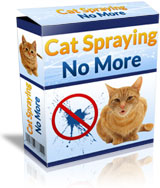
Check out more advice from Susan Richards on why your cat may not be using the litter box. Click here.
Exploring the Fascinating World of Felines: A Review of “Cat Eye View” Video
“Cats Eye View” is a captivating video that provides a unique perspective into the world of felines. Produced by Futurism, a renowned platform for exploring emerging technologies, this immersive experience allows viewers to see the world through the eyes of cats. In this review, we will delve into the mesmerizing footage and discuss the highlights of this intriguing video.
Content and Presentation:
The “Cat Eye View” video offers an unparalleled opportunity to witness the world from a feline’s perspective. Through the use of specially designed cameras attached to the collars of various cats, viewers are taken on a remarkable journey filled with intriguing sights and sounds. The video seamlessly combines high-definition footage with informative narration, creating an immersive experience that educates and entertains.
The highlight of “Cat Eye View” is the immersive nature of the footage. From the moment the video starts, viewers are transported into the world of these curious creatures. The cameras capture the intricate details of the cats’ surroundings, showcasing their unique perspective on the world. Whether it’s exploring their territory, chasing after prey, or engaging in playful interactions, the video provides a fascinating glimpse into the life of a cat.
The narration accompanying the video is informative and engaging. It offers insights into feline behavior, explaining the reasons behind their actions and shedding light on their instincts. The information is presented in a clear and concise manner, making it accessible to both cat enthusiasts and those seeking to understand their pets better.
Visual and Audio Quality:
The visual quality of the “Cat Eye View” video is exceptional. The footage is crisp, with vibrant colors and sharp details. The use of multiple camera angles and perspectives adds depth and variety to the visuals, enhancing the overall viewing experience. From close-ups of the cats’ whiskers to panoramic shots of their surroundings, every frame is visually captivating.
The audio quality is equally impressive, with clear narration and well-balanced background sounds. The ambient sounds of the environment, such as birds chirping or leaves rustling, create an immersive atmosphere that adds to the authenticity of the experience. The audio and visual elements complement each other seamlessly, enhancing the overall impact of the video.
Educational Value and Entertainment :
In addition to its entertainment value, “Cat Eye View” provides educational insights into feline behavior and the world from their perspective. By showcasing how cats interact with their environment, the video offers a better understanding of their instincts and natural behaviors. Cat owners and enthusiasts can gain valuable knowledge from observing the cats’ hunting techniques, territorial markings, and social interactions.
Moreover, the video inspires a sense of empathy and appreciation for the unique experiences of our feline companions. It encourages viewers to view the world from a different vantage point and recognize the intricate details that shape a cat’s daily life.
Conclusion:
“Cats Eye View” is a captivating video that offers a fresh and fascinating perspective on the world of cats. Its immersive nature, informative narration, high-quality visuals, and educational value make it a must-watch for cat lovers and anyone curious about feline behavior. Prepare to be enchanted as you explore the world through a cat’s eyes.
I thought of doing this myself but my cat stays inside now a days. There is also an interesting video game named stray which is from the cat’s point of view. Also as the article stated people like watching cats on the internet. So very cute video.
Original article to read click here
Interstitial Cystitis May Be the Problem
Interstitial cystitis is one of most mysterious of feline diseases to manage and treat. Part of the problem lies in the fact that the symptoms of this illness can be so vague and broad that pinpointing the correct diagnosis can be difficult. The usual victims of interstitial cystitis are young male cats, although females can also suffer from this as well. Many cats who are afflicted with FIC usually outgrow it eventually.
Symptoms of Interstitial Cystitis
Diagnosis of interstitial cystitis is usually made on a basis of the symptoms that the cat is presenting. In most cases, there is no sign of infection, but your veterinarian will suspect interstitial cystitis if you cat is showing some of these symptoms:
- Straining when he tries to urinate.
- Urinating with great frequency, with sleep disturbed by the need to urinate.
- Blood will usually be present in the urine.
- The symptoms appear when the cat is subjected to stress.

Causes of Interstitial Cystitis
Research is still underway to understand exactly what causes interstitial cystitis in cats. No one theory of the cause of this condition has been absolutely agreed upon, but several lines of thought have been proposed. The nervous system appears to play a major role.
- The nerves that serve the bladder may have become inflamed. Some veterinarians believe that stress alone is responsible for this inflammation, while other think that an irritated bladder lining begins the cycle.
- The bladder is provided with a protective coating of mucus, which keeps the waste products filtered out by the kidneys from causing it to become irritated. If the mucus is somehow damaged, harm can be done to the bladder wall, causing inflammation.
- Stress is just as harmful to cats as it is to humans, and flare-ups of interstitial cystitis are often linked to a stressful situation, particularly with cats that remain indoors exclusively or in multi-cat households.
Treatment
Despite the severity of interstitial cystitis, it is one of the more difficult of urinary tract diseases to treat successfully. Antibiotics are generally useless in providing relief, although a bacterial infection should be ruled out to begin with.
Most veterinarians treat interstitial cystitis with anti-inflammatory drugs such as prednisone. These help to reduce inflammation. Anti-inflammatories are usually given in combination with pain relievers. Another approach, since stress appears to be a major factor, is to give the cat antidepressants and anti-anxiety medications. To help heal the bladder and make it less susceptible to damage, your vet may prescribe drugs that will help restore and strengthen the mucus coating.
You can help to prevent a recurrence of interstitial cystitis by feeding the cat canned food and making sure that he or she drinks plenty of water. Making the home more relaxed and providing toys and attention can also help to keep your cat free of FIC
More about Feline Idiopathic Cystitis
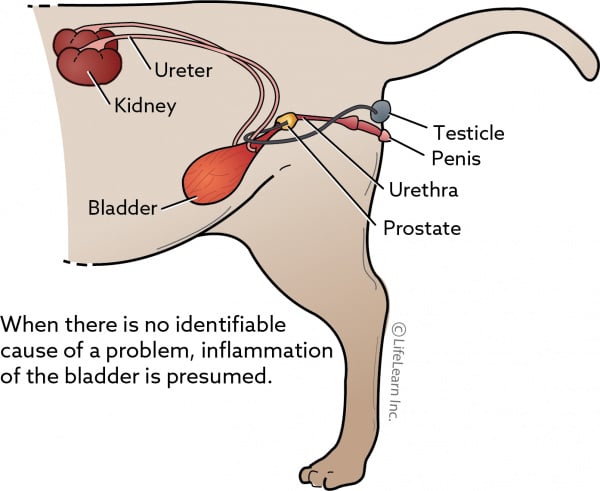
Feline Idiopathic Cystitis By Tammy Hunter, DVM; Malcolm Weir, DVM, MSc, MPH; Ernest Ward, DVM
Cat Behavior Demystified: Understanding Feline Body Language and Communicating with Confidence
Cats have long captivated our hearts with their mysterious and independent nature. However, understanding their behavior and body language can be a challenge for many cat owners. By unraveling the secrets of feline communication, we can build a stronger bond with our furry companions and ensure their well-being. In this article, we will demystify cat behavior, shedding light on their body language and providing you with the tools to communicate with confidence. From tail movements to vocalizations, let’s delve into the fascinating world of cat behavior and decode the messages our feline friends are trying to convey.
Feline Body Language
Cats are masters of nonverbal communication, using their bodies to convey a range of emotions and intentions. Understanding feline body language is crucial for cat owners and enthusiasts to ensure the well-being and strengthen the bond with their furry friends. Here are some key aspects of feline body language to help decode their silent messages.
Understanding feline body language takes time, observation, and patience. By paying attention to their tails, ears, eyes, body posture, and grooming habits, we can better comprehend our cats’ emotions and respond appropriately. This knowledge enables us to create a safe and nurturing environment for our feline friends, strengthening the bond and promoting their overall well-being.
- The Tail’s Tale:
A cat’s tail is a window into their emotions and intentions. Pay attention to its position and movements. A relaxed tail held straight up or with a slight curve indicates a content and confident cat. A puffed-up tail suggests fear or aggression, while a tucked tail signifies anxiety or submission. A flicking or twitching tail can indicate excitement or irritation. By observing their tail, you can better gauge your cat’s mood and respond accordingly, creating a calm and harmonious environment for them. - Ears: The Feline Mood Indicator: Cats use their ears to communicate a range of emotions. Forward-facing ears with a relaxed posture signify curiosity or friendliness. However, flattened or backward-facing ears indicate fear, aggression, or stress. Twitching ears can suggest alertness or irritation. By observing your cat’s ears, you can gauge their emotional state and adjust your interactions accordingly. If your cat’s ears are flattened or pulled back, it’s best to give them some space and reassess the situation to avoid any potential conflicts or discomfort.

Get Cat Language Bible
- The Language of Purring: Purring is a hallmark of feline communication, often associated with contentment and relaxation. However, cats can purr in various situations, including when they are anxious or in pain. Understanding the context is crucial. A relaxed cat with closed eyes and a gentle purr typically signals happiness and comfort. If your cat is purring excessively or in combination with other signs of distress, it may be a signal that something is amiss. In such cases, provide a calm and secure environment or consult a veterinarian to address any underlying health issues.
- Meows and Vocalizations: Cats have a repertoire of vocalizations to express their needs and desires. Each meow carries a unique meaning, ranging from a gentle greeting to a demanding plea. Pay attention to the pitch, tone, and intensity of your cat’s meows. A high-pitched, short meow may indicate excitement or a request for attention, while a low-pitched, prolonged meow may signal discomfort or hunger. By listening to their vocalizations and observing their body language, you can better understand what your cat is trying to communicate and respond accordingly.

Get Cat Language Bible
- Eyes: The Window to the Soul: A cat’s eyes can convey a wealth of information. Wide-open, relaxed eyes indicate a comfortable and friendly cat. Dilated pupils often indicate excitement, fear, or aggression. Half-closed eyes can signify contentment and trust. Blinking slowly at your cat is a sign of affection and can help build trust and rapport. However, staring directly into a cat’s eyes without blinking can be interpreted as a threat. Respect your cat’s personal space and avoid prolonged direct eye contact, especially with unfamiliar cats, to prevent any potential confrontations.
- Body Posture and Gestures: Cats communicate through their entire body, not just their tail and ears. A relaxed and open posture, with a straight back and no arched or fluffed-up fur, indicates comfort and confidence. Conversely, a hunched or arched back can signal fear or aggression. Watch for other gestures such as kneading, stretching, or rolling over, which often indicate contentment and trust. Understanding your cat’s body language and responding appropriately will foster a deeper connection and allow for better interaction and mutual understanding.
Conclusion: Decoding cat behavior and understanding their body language is an essential skill for every cat owner. By observing and interpreting their tail movements, ear positions, vocalizations, eye expressions, and body postures, we can better understand our feline companions and communicate with confidence. Building a strong bond based on trust and understanding will create a harmonious environment for both you and your cat. Remember to be patient, observant, and responsive to your cat’s cues, and with time, you’ll become fluent in the subtle language of cats, enhancing your relationship and enriching both of your lives.
More articles on cat behavior check out this interesting article on why cats meow in the morning link
How to groom a long haired cat
Long-haired cats are absolutely beautiful, but they do require a little more grooming than short-haired cats. If you have a long-haired cat, it is important to regularly groom them to keep their coat healthy, clean, and free of tangles and mats. Here is a step-by-step guide on how to groom a long-haired cat.
-
Start by Brushing
The first step in grooming a long-haired cat is to brush their fur thoroughly. Use a slicker brush or a comb with long teeth to remove any tangles or mats. Begin by brushing their fur against the grain to loosen any tangles, then brush in the direction of the fur to remove any loose hair. Be gentle when brushing their fur, especially around sensitive areas such as the belly and legs.
-
Remove Tangles and Mats
If you come across any tangles or mats while brushing, use a comb with short teeth or a mat remover tool to gently work through them. Be careful not to pull too hard or cut the cat’s fur while removing tangles and mats.
-
Trim Their Fur
If your long-haired cat has particularly long fur, you may want to trim their fur with scissors or clippers to keep it from getting too long or tangled. Use sharp scissors and start trimming from the base of the fur, working your way towards the ends. Be careful not to cut too much off at once, as this can result in uneven fur.
-
Clean Their Ears
Long-haired cats are prone to ear infections, so it is important to regularly clean their ears to prevent any issues. Use a damp cloth or a cotton ball to gently wipe around the edges of their ears. Do not insert anything into their ear canal, as this can cause damage.
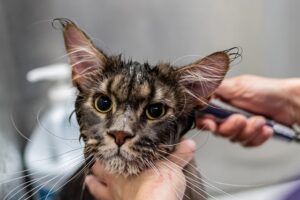
Image by Aleksandr Tarlõkov from Pixabay
-
Check Their Nails
Long-haired cats’ nails can grow quickly, so it is important to check their nails regularly to ensure they are not too long. Use cat nail clippers to trim their nails, being careful not to cut the quick, which is the pink part of the nail that contains blood vessels. If you are unsure how to trim their nails, ask your veterinarian for guidance.
-
Clean Their Eyes
Long-haired cats are also prone to eye infections, so it is important to regularly clean their eyes to prevent any issues. Use a damp cloth or a cotton ball to gently wipe around their eyes. If your cat’s eyes are particularly watery or crusty, consult your veterinarian for advice.
-
Bathe Them
If your long-haired cat becomes particularly dirty or smelly, you may need to bathe them. Use a cat-specific shampoo and follow the instructions on the bottle. Be sure to rinse their fur thoroughly, as leftover shampoo can cause skin irritation.
-
Dry Them Off
After bathing, use a towel or a hairdryer on a low heat setting to dry off your cat’s fur. Be sure to dry them off completely, as damp fur can cause skin irritation or lead to tangles and mats.
-
Finish with a Brush
Once your long-haired cat is clean and dry, finish with a thorough brush to remove any remaining loose hair. Use a slicker brush or a comb with long teeth to brush their fur in the direction of the fur.
Tips and Tricks grooming a long haired cat:
- Regular grooming is key to keeping your long-haired cat’s fur healthy and tangle-free. Aim to groom your cat at least once a week, if not more often.
- Be gentle when brushing or combing your cat’s fur, especially around sensitive areas such as the belly and legs.
- If your cat has particularly thick fur, you may want to invest in a de-shedding tool or a mat remover tool to help keep their fur under control.
- If you are unsure how to groom your long-haired cat, consider taking
Check out Best cat products for shedding since this would help you groom your long haired cat.
Best cat products for shedding
Shedding is a natural process for cats, but it can be frustrating for owners who are constantly cleaning up fur around their homes. Luckily, there are many cat products on the market that can help reduce shedding and make life easier for both cats and their owners. In this article, we will discuss the best cat products for shedding and how they work.
-
Furminator deShedding Tool
The Furminator deShedding Tool is one of the most popular cat products for shedding on the market. It is a grooming tool that helps to remove loose fur from cats’ coats, reducing shedding and helping to prevent hairballs. The tool has a stainless steel edge that reaches through the topcoat to remove loose undercoat hair without damaging the topcoat. It also has a comfortable grip handle that makes it easy to use.
-
FURminator Hairball Prevention Shampoo
FURminator Hairball Prevention Shampoo is a cat shampoo that helps to reduce shedding and prevent hairballs. It contains omega 3 and 6 fatty acids, papaya leaf extract, and calendula extract, which help to nourish the skin and coat and reduce shedding. The shampoo is also designed to help reduce hairballs by lubricating the digestive system, making it easier for hair to pass through.
-
Burt’s Bees for Cats Dander Reducing Whip
Burt’s Bees for Cats Dander Reducing whip is a natural cat product that helps to reduce shedding and dander. It contains natural ingredients such as aloe vera and colloidal oatmeal that help to soothe and moisturize the skin, reducing shedding and dander. The spray is easy to use and can be applied to cats’ coats to help reduce shedding and promote healthy skin and coat.
-
ChomChom Roller
The ChomChom Roller is a cat product that helps to remove pet hair from furniture and clothing. It has a patented design that uses static electricity to attract and remove pet hair from any surface. It is easy to use and does not require any adhesive or sticky tape. The ChomChom Roller is also reusable and eco-friendly, making it a great choice for environmentally conscious cat owners.
-
Shed Defender
The Shed Defender is a unique cat product that helps to reduce shedding and keep cats’ coats clean. It is a bodysuit that fits snugly around cats’ bodies, covering their fur and preventing loose hair from falling out. The Shed Defender is made from breathable, stretchy fabric that is comfortable for cats to wear. It is also machine washable and easy to care for.
-
KONG ZoomGroom
The KONG ZoomGroom is a grooming brush that helps to reduce shedding and promote healthy skin and coat. It has a unique design that massages cats’ skin and stimulates the production of natural oils, which help to keep cats’ coats healthy and shiny. The brush is easy to use and can be used on both wet and dry coats.
-
Omega-3 Supplements
Omega-3 supplements are a natural cat product that can help to reduce shedding and promote healthy skin and coat. Omega-3 fatty acids are essential nutrients that help to nourish the skin and coat, reducing shedding and promoting healthy fur growth. Omega-3 supplements can be found in various forms, including fish oil and flaxseed oil, and can be added to cats’ food or given as a treat.
Why omega-3 is good for your cat’s fur.
Omega-3 supplements are a great addition to a cat’s diet as they provide numerous health benefits for cats, including promoting healthy skin and a shiny coat. Omega-3 fatty acids are essential nutrients that cannot be produced by the cat’s body, so they must be obtained through their diet or supplements.
Omega-3 fatty acids are a type of polyunsaturated fat that are found in fish oil, flaxseed oil, and other sources. They help to nourish the skin and coat by reducing inflammation, moisturizing the skin, and promoting healthy fur growth.
When cats consume omega-3 supplements, they help to improve the quality and texture of their fur. Omega-3 fatty acids can help to reduce shedding and prevent dry, flaky skin, which can cause irritation and discomfort for cats. By promoting healthy skin, omega-3 supplements can also help to reduce the risk of skin allergies, infections, and other skin problems.
In addition to promoting healthy skin and fur, omega-3 supplements also provide other health benefits for cats. They help to support cognitive function, reduce inflammation, and improve heart health. They can also help to support immune function and reduce the risk of certain chronic diseases.
It is important to note that not all omega-3 supplements are created equal, and some may be more effective than others. It is important to choose a high-quality supplement that is specifically designed for cats, as some supplements may contain harmful additives or contaminants.
Overall, omega-3 supplements are a great addition to a cat’s diet as they provide numerous health benefits, including promoting healthy skin and a shiny coat. By nourishing the skin and reducing inflammation, omega-3 supplements can help to keep cats looking and feeling their best.
-
Lint Roller
A lint roller is a simple and effective cat product that helps to remove pet hair from clothing and furniture. It is an inexpensive tool that can be found in most stores and is easy to use. Simply roll the lint roller over any surface that has pet hair on it, and the sticky paper will pick up the hair.
In conclusion
Shedding is a natural process for cats, but it can be managed with the help of the right cat products. These products can help reduce shedding, promote healthy skin and coat, and make life easier for both cats and their owners.
When choosing cat products for shedding, it is important to consider the needs of your cat. Some cats may have sensitive skin or be prone to allergies, so it is important to choose products that are gentle and non-irritating. Additionally, some cats may be more resistant to grooming than others, so it may take some trial and error to find the right grooming tool for your cat.
Overall, the best cat products for shedding are those that are effective, safe, and easy to use. With the right combination of grooming tools, supplements, and cleaning products, cat owners can manage shedding and keep their homes clean and fur-free.
This content may contain links to products, software and services. Please assume all such links are affiliate links which may result in my earning commissions and fees.
Characteristics of a Maine coon cat
Maine Coon cats are among the largest domesticated cat breeds in the world, and they are also one of the most popular breeds in the United States. They are known for their majestic appearance, friendly disposition, and unique personality traits. In this article, we will discuss some of the key characteristics of the Maine Coon cat breed.
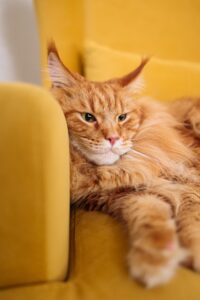
Orange Maine Coon by Thirdman from Pexel
Physical Appearance of a Maine Coon
One of the most notable characteristics of the Maine Coon is its size. They are typically larger than most other cat breeds, with some adult males weighing up to 25 pounds. They have long, thick fur that comes in a variety of colors and patterns, including tabby, black, white, and calico.
Maine Coons have large, tufted ears and big, expressive eyes that are typically green or gold. They have a distinctive face shape that is slightly square with high cheekbones, giving them a regal and dignified appearance.
Personality of a Maine Coon
The Maine Coon is known for its friendly and sociable nature. They are often described as “gentle giants” because of their size and easy-going temperament. They are great with children and other pets and enjoy being around people.
Maine Coons are also known for their playful and curious personalities. They love to play and explore, and they are often compared to dogs because of their loyalty and affectionate nature. They are also intelligent and can be trained to perform tricks or play games.
Health of a Maine Coon
Maine Coons are generally healthy cats, but they are prone to some health issues that are common in large cat breeds. These include hip dysplasia, which can cause joint pain and mobility issues, and hypertrophic cardiomyopathy, a type of heart disease that can be fatal if left untreated.
To keep your Maine Coon healthy, it’s important to provide them with a balanced diet and plenty of exercise. Regular vet check-ups are also essential to catch any potential health problems early.
Grooming of a Maine Coon
Maine Coons have thick, long fur that requires regular grooming to keep it healthy and tangle-free. They shed seasonally, so it’s important to brush them frequently during shedding periods to remove loose fur and prevent matting.
Maine Coons also have large, tufted ears that can collect dirt and debris, so regular ear cleaning is important to prevent infection. Finally, they also need regular nail trims to prevent overgrowth and discomfort.
Overall, the Maine Coon cat breed is a wonderful choice for families looking for a friendly, sociable, and majestic pet. They are loyal, intelligent, and playful, and their unique physical appearance makes them a striking addition to any home. With proper care and attention, they can live long, healthy lives and provide years of love and companionship to their owners.

Get Cat Language Bible
Now about the characteristics of an orange cat

Get Cat Language Bible
Interesting facts about Maine Coons
Maine Coon cats are one of the oldest natural breeds of cats in North America. They are known for their large size, striking appearance, and friendly personality. Here are some interesting facts about Maine Coons:
- Origin and Name: The Maine Coon breed originated in the state of Maine in the United States. The breed’s name is derived from the state’s name, and the word “coon,” which is a colloquial term for raccoons, with whom they were once thought to have a resemblance.
- Size and Appearance: Maine Coons are known for their large size and fluffy appearance. They are one of the largest cat breeds, with males weighing between 13-18 pounds, and females weighing between 8-12 pounds. They have long, bushy tails, and their ears are adorned with tufts of fur.
- Unique Paws: Maine Coons have unique paws that are designed for walking on snow. Their paws are large and round, with tufts of fur between their toes, which act like snowshoes to help them walk on deep snow.
- Water Lovers: Maine Coons are known for their love of water. They enjoy playing with water and will often dip their paws in their water bowls to splash around. Some Maine Coons have even been known to swim in pools or lakes.
- Gentle Giants: Despite their large size, Maine Coons are gentle and affectionate cats. They are known for their friendly personality and their love of human companionship. They are often called the “gentle giants” of the cat world.
- Talkative: Maine Coons are known for being talkative cats. They are not shy about expressing themselves and will often meow, chirp, and trill to communicate with their owners.
- Colors and Patterns: Maine Coons come in a variety of colors and patterns, including black, white, red, cream, brown, and orange. They also have a variety of patterns, including tabby, tortoiseshell, and solid colors.
- Health and Longevity: Maine Coons are generally a healthy breed of cat, with a lifespan of 12-15 years. They are prone to a few health issues, including hip dysplasia and hypertrophic cardiomyopathy, but these can be managed with proper care and attention.
In conclusion, Maine Coons are a fascinating breed of cat that have captured the hearts of many cat lovers around the world. Their unique appearance, friendly personality, and love of water make them a delightful addition to any household.

Get Cat Language Bible
Interesting facts about orange cats
Orange cats, also known as ginger or marmalade cats, are a popular and well-loved feline breed. They are known for their striking orange coat and their playful and affectionate personalities. Here are some interesting facts about orange cats:
- Genetic Mutation: The orange color of a cat’s coat is caused by a genetic mutation that affects the production of pigment. This mutation can occur in both male and female cats.
- Different Shades: Orange cats come in a variety of shades, ranging from light yellow to deep red. Some cats may have white markings on their fur, adding to their unique appearance.
- Good Luck: In some cultures, orange cats are considered good luck. In Japan, for example, they are thought to bring wealth and prosperity to their owners.
- Sociable: Orange cats are known for being sociable and friendly. They enjoy spending time with their owners and will often follow them around the house.
- Vocal: Orange cats are known for being vocal and will often meow and purr to communicate with their owners.
- Health: Orange cats are generally healthy, but they may be prone to certain health issues such as obesity and dental problems.
- Famous Orange Cats: There have been many famous orange cats in pop culture, including Garfield, Heathcliff, and Hobbes from the comic strip Calvin and Hobbes.
In conclusion, orange cats are a unique and beloved breed of feline that bring joy and companionship to their owners. Their striking orange coat, friendly personality, and good luck make them a delightful addition to any household.
Check out an article on Maine coon and Norwegian forest cat which is a close relative breed of domestic cats.
This content may contain links to products, software and services. Please assume all such links are affiliate links which may result in my earning commissions and fees.
